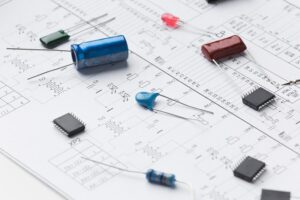VFDs save Energy

Expert technical article about how variable frequency drives save energy
Variable frequency drives (VFDs) can significantly save Energy in various electric motor applications. This article will explore how VFDs work, their benefits, and how they can save Energy.
How Variable Frequency Drives Work
VFDs are electronic devices that control the speed and torque of AC electric motors. They convert the incoming fixed-frequency AC power to DC power and then to AC power with variable frequency and voltage levels. Adjusting the VFD’s frequency and voltage output, the motor’s speed and torque can be precisely controlled.
Benefits of Variable Frequency Drives
The main benefits of using VFDs are energy savings, improved process control, and extended motor life.
Energy Savings: One of the primary benefits of using VFDs is energy savings. By precisely controlling the speed of the motor, VFDs can match the motor’s speed and torque to the load requirements of the application. This eliminates the Energy wasted when running the engine at a constant rate, even when the load requirements are low. This results in significant energy savings, up to 50% or more in some cases.
Improved Process Control: VFDs can also improve process control in many applications. By controlling the motor’s speed and torque, VFDs can ensure that the process operates at the desired speed and with the required level of precision. This can result in improved product quality, reduced scrap, and increased efficiency.
Extended Motor Life: VFDs can also extend the life of electric motors. VFDs can reduce the wear and tear on the motor’s bearings, shafts, and windings by reducing the speed and torque when the load requirements are low. This can result in longer motor life, reduced maintenance costs, and increased reliability.
How Variable Frequency Drives Save Energy
VFDs save Energy in two main ways: reducing the Energy wasted when running the motor at a constant speed and reducing the Energy required to start the engine.
Reducing Energy Wasted: When a motor runs at a constant speed, it uses energy even when the load requirements are low. This Energy is wasted because the engine is running faster than it needs to. Using a VFD to adjust the motor’s speed to match the load requirements, the machine only uses the Energy it needs. This can result in significant energy savings.
Reducing Starting Energy: Starting a motor requires significant Energy, especially for large engines. VFDs can reduce the amount of Energy required to start the engine by gradually increasing the frequency and voltage levels of the AC power. This reduces the starting current and the mechanical stress on the motor’s components. By lowering the starting Energy, VFDs can save Energy and extend the motor’s life.

Variable frequency drives are powerful tools that can significantly save Energy in electric motor applications. By precisely controlling the speed and torque of the engine, VFDs can eliminate the Energy needed to run the engine at a constant speed and reduce the Energy required to start the engine. This results in significant energy savings, improved process control, and extended motor life.